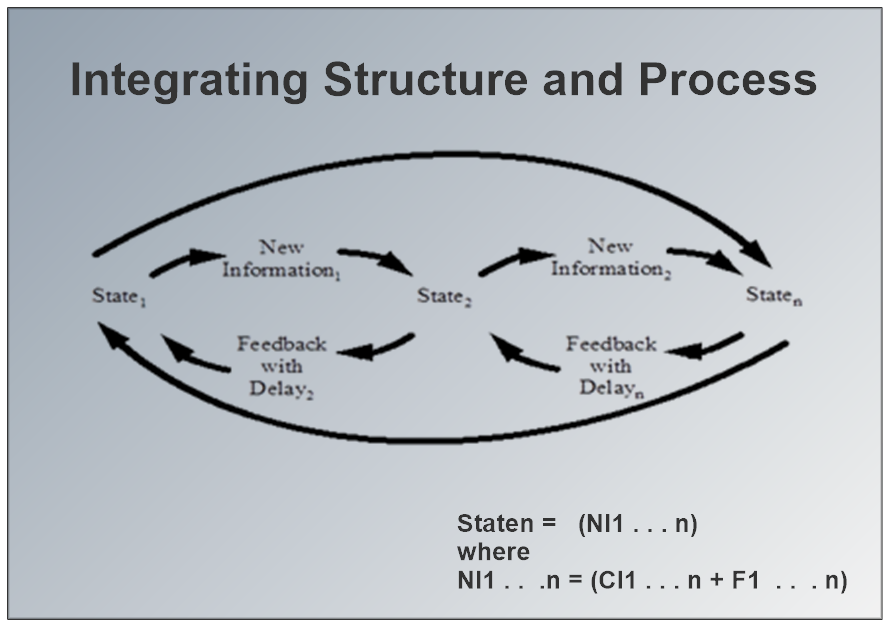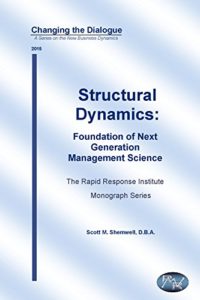Structural Dynamics
Structural Dynamics is defined as “the morphology or patterns of motion towards process equilibrium of interpersonal systems.”
This definition was first described by Dr. Shemwell in his dissertation, Cross Cultural Negotiations between Japanese and American Businessmen: A Systems Analysis,
The word system is key. According to Peter Senge, The Fifth Discipline, markets and competitive forces must be regarded as systems. As such, markets will strive for (although never truly reach) stability or equilibrium. As a behavioral process, Structural Dynamics has been difficult to measure and analyze until now.

Integrating Structure & Process
Structural Dynamics is one statistical and modeling technique which integrates structural and process thinking, providing new insight into the underlying forces at work in markets. Although built on a strong foundation of statistical and mathematical theorems, these techniques are straightforward and easily mastered by individuals with minimal exposure to statistics. There are even models that require no mathematical analysis. Systems are actually a combination of multiple sub-systems with varying degrees of integration.
Behavioral Economics
Classically, economists have based theories on the so-called rational economic actor. The thinking is that business (human) behavior is guided by “testable,” hence predictable decision-making processes.
These models have shown to be weak. The Behavioral Economics decision-making model recognizes that societal, cultural and emotions among other biases contribute to how decisions are made.
Behavioral economics as extended by Structural Dynamics is rooted in game theory. It recognizes these human decision-making limitations.

Implementing Structural Dynamics
Structural Dynamics is the most comprehensive platform available to assess Tsunami like impacts on businesses and even whole industries. It integrates behavioral science with a broad array of mathematical tools now available to all managers.
Structural Dynamics is not a predictive model in the colloquial sense. It is a methodology that enables management to develop a better understanding of the dynamics of their environment.
Yet it is simple to utilize and does not necessarily require rigorous mathematics to achieve real value to the organization.
Often conducing a Work Shop on the issues the firm/sector is facing can provide critical insight. For example, a sample list of over 100 variables we have developed include:
- Not obvious or normally thought of as industry driver
- Usually not directly related to standard industry practices
- Becomes more visible over time or repeated measurement
- Often not specific to a single industry or economy
- Cannot be determined by analysis of best practices
- Typically, not associated with a single or few number of processes
- Can be cyclical or seasonal in nature
- Not necessarily random or chaotic events in nature
- Not necessarily economic variables in nature
- Tend to be long term variables with limited reaction to specific current events
- Not associated with processes in a single firm
- Can remain dormant for long periods of time, but when they become visible the impact can be significant and swift
- Demographics may provide insight into emerging or future Structural Dynamics, they should not be used exclusively
- Often small niche (or new) players may benefit from Structural Dynamics opportunities
- These niches are often outside of the industry of interest, but are subsequently imported into the industry of interest
- Technological developments may forecast future competitive events, i.e., the impact of cellular phones on the pay phone sector
- Not all technology is useful in the near term
Full details are available in our monograph, Structural Dynamics: Foundation of Next Generation Management Science.

Have questions or desire to schedule a Workshop? Contact us for a free and no obligation consultation.
